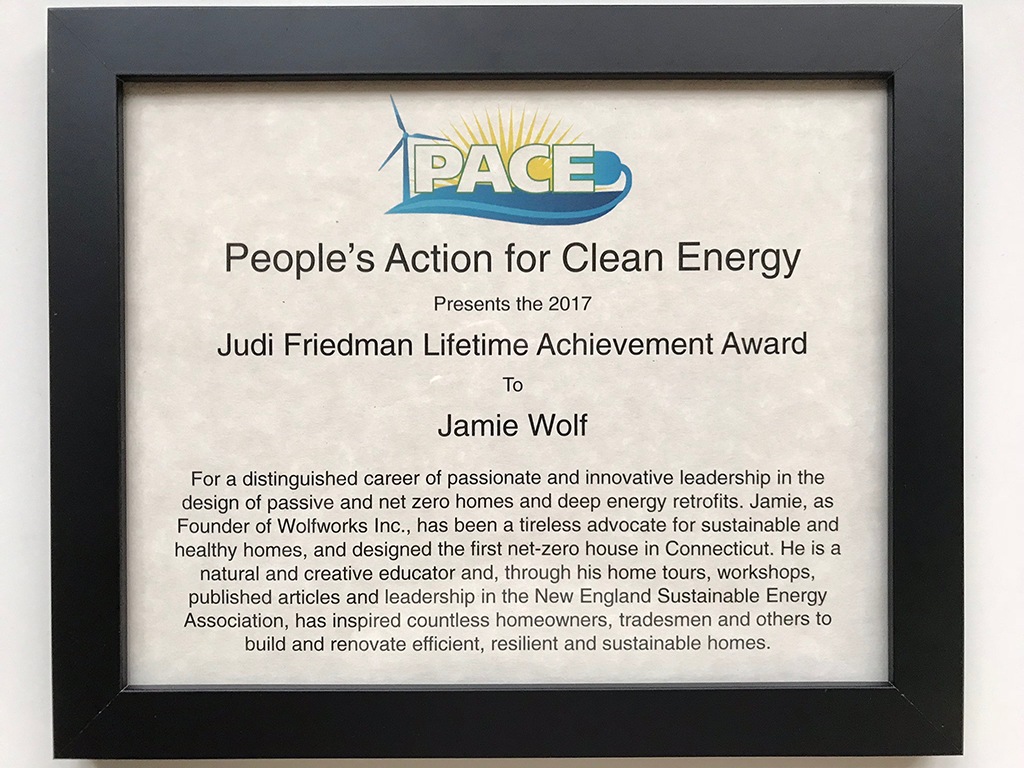Judi and Lou Friedman were local treasures. They devoted their lives to an activist organization here in CT called People’s Action for Clean Energy. Following their deaths last year the next generation has taken up the leadership and this year chose to recognize our work with the Judi Friedman Lifetime Achievement Award. It was an honor to be recognized. Here is the speech I gave at their annual meeting.
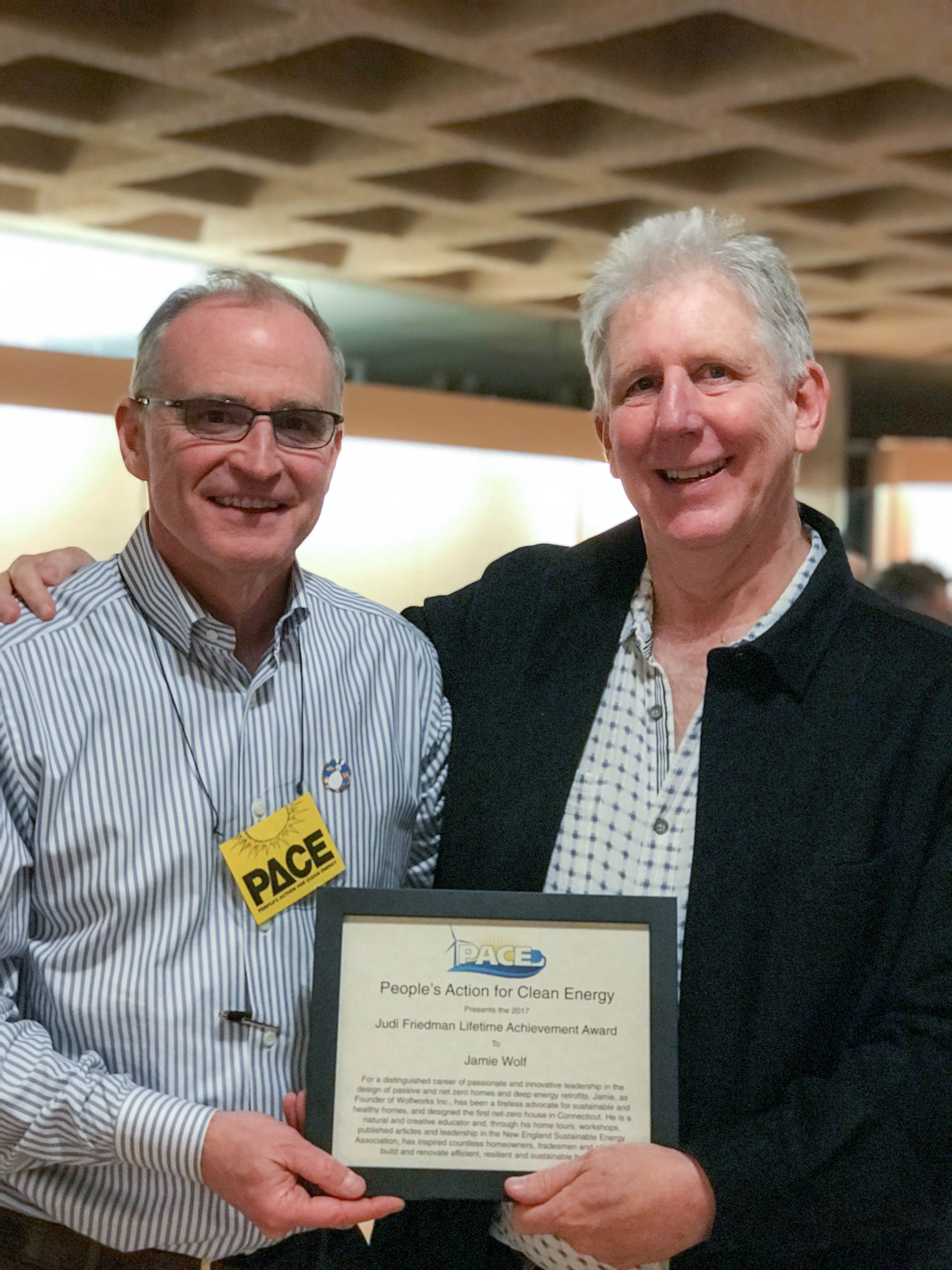
It is a special privilege to associate my life’s work with the standard of commitment demonstrated by Judi Friedman and the community she convened around the relationship between clean energy, a safe and sane environment, and an ethic grounded in peace. Your community.
Over the years Judi would call me once and awhile to check in and champion our work, work she would thank us for doing. Her gratitude is now your gratitude. I want to talk about that fit.
Our last enterprise with Judi was a video championing the work we do. She wanted to shine a spotlight on the very real potential of homes that produce as much energy as they use. Good stuff! The stuff that gets us up in the morning! The work we live to do. The work that will be essential to achieving the goals of 100% Connecticut.
I recently read an interview with the remarkable Pete Seeger in which he was asked:
What would you say is the most important work we have to do right now? This was his answer:
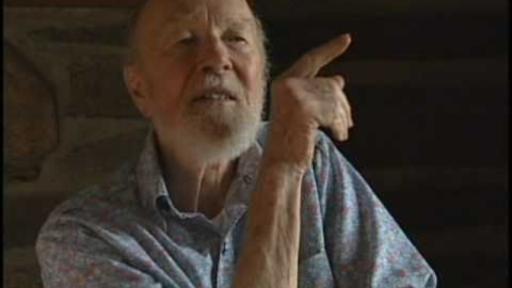
It’s working within one’s home community. We know that the big job is to save the world, but where do you start? I’m convinced that if we are unable to work in our home communities, the job is not going to be done. The world is going to be saved by people who fight for their homes, whether they’re fighting for the block where they live in the city or a stretch of mountain or river. But unless they can fight within their own communities, I think they’re kidding themselves. The Bible says, “How can you love God, whom you have not seen, if you don’t love your neighbor, whom you have seen?” Similarly I would ask, “How can you save the world you have not seen if you can’t save the community you have seen?”
So I want to talk about three communities and the ways in which they entwine to advance our shared mission.
The work we do, the work you have chosen to recognize and champion, was made possible by the professional community that I call my tribe. The Northeast Sustainable Energy Association, known as NESEA, and well known by many of you, was formed in the 70’s by a community of architects, engineers, and builders in the Northeast who recognized that the world as it was, a world in which our building’s use of energy was an afterthought, needed to imagine instead that every watt matters.
Celebrating my achievements is a celebration of what that community made possible. Over four decades my NESEA tribe has convened around an ethic of shared inquiry, scrutiny, and mastery. We demand to know and learn from what works, and what doesn’t. We seek proof. We are rigorous AND vigorous. The work we each do is made possible by what we learn from each other about the work we are all collectively doing. We advance our confident vision together.
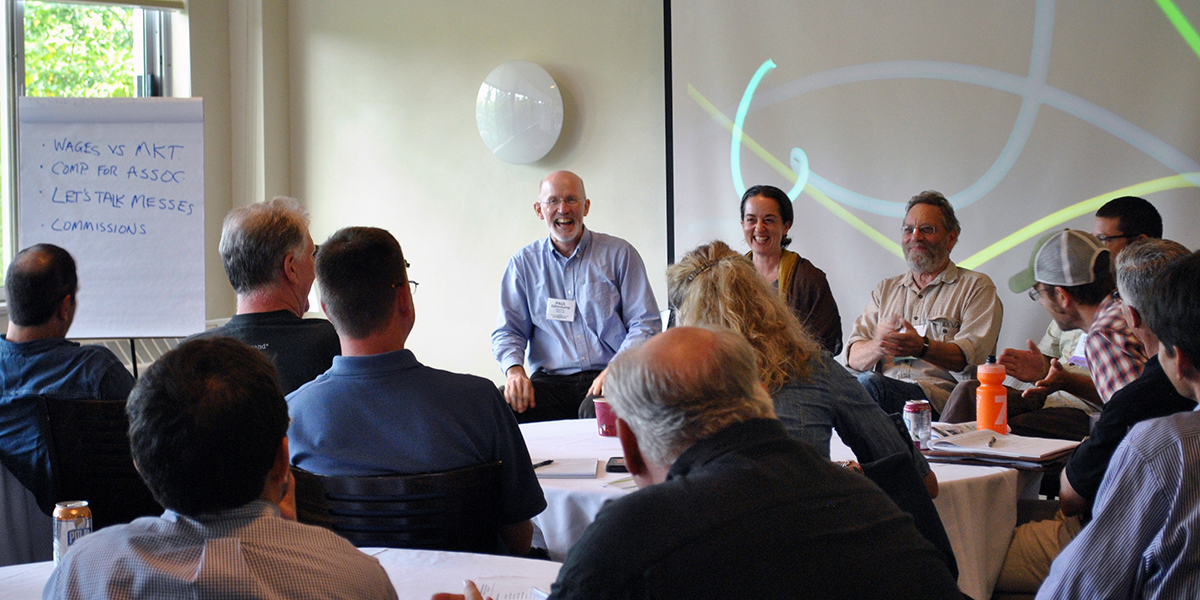
That work, all those projects that prove this works, provide the foundation for what your community, all of you who are part of PACE, are active advocating for. We depend on you, and other advocates, to take our work as proof that a clean energy future is not only possible, but desirable.
We host open houses for all our projects and nobody leaves without exclaiming, “Why isn’t every home built like this?” We need you to help us ask this question in your communities. We need you to ask this question of the politicians and regulators, the real estate agents and banks, the architects and builders who remain anchored in the world as it was.
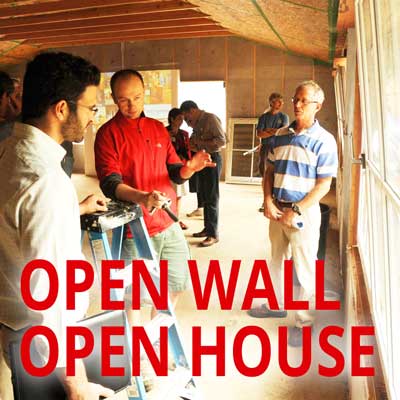
We need to invite every one of them to imagine the world as it could be by showing them it is possible. A world in which clean energy powers homes that are in every way more healthy, comfortable, durable, and energy secure. Homes that are part of the solution rather than continuing to contribute to the problem.
None of this is remotely possible without engaging the essential local community of trade professionals who do the work. If we fail to engage our trade partners the materials we need will not be in stock. The carpenters, electricians, plumbers and the rest will resort to the practices they are certain of that, despite their best intentions, are more likely to undermine than support the integrated effort required to achieve a high performance result.
For us this depends on the guidance and supervision of our Project Manager Janet Downey, a certified Passive House Builder. She is devoted to knitting that team together to successfully construct a high performance, net zero home. She herds the cats. Bit by bit they get excited about what we are achieving together. There can be no clean energy future without them aligning their practices with ours.
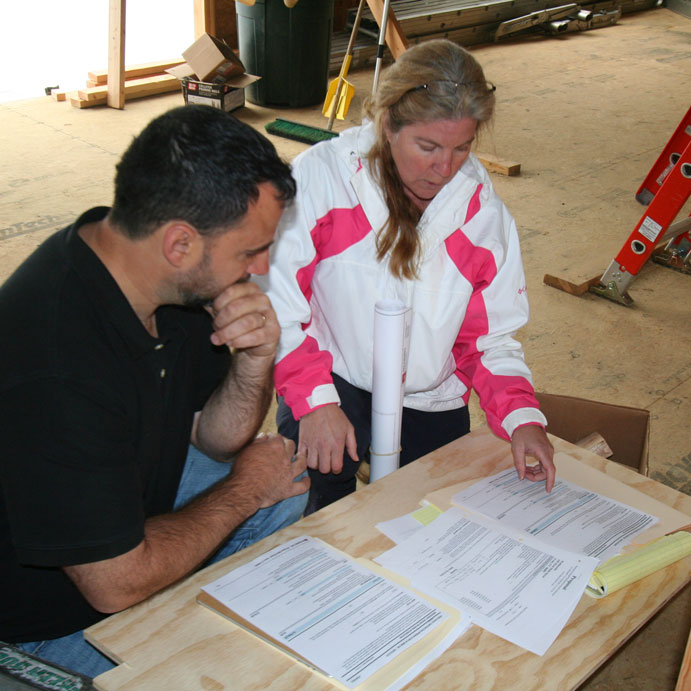
Building high performance homes is actually not hard to do. It’s just different than the way we learned to build the homes of the past. This is not however a menu of techniques and technologies we can just paste on. They need to be fully understood and they need to be baked in. Baked in, not pasted on.
Now here’s the most impressive part. It is surely remarkable to achieve net zero energy performance. But at the end of the day a home is not experienced as an actuarial exercise or part of smart policy. A home is to live in and these homes are profoundly better to live in than the homes of the past. It’s enough to make one evangelical!
So let’s end here. In each of our communities there are thousands of homes and businesses and institutions still carrying a larger load than they need to. Every one of them holds some opportunity to lighten its load. In each of our communities new buildings are being planned and built, and too many continue to bake in energy burdens that will endure for decades. Some will paste on alluring technologies – and better that than nothing.
What we want to encourage, what we want to reveal, what we need to teach and train and incentivize and finance are buildings where energy performance is planned for from the beginning, attended to as its built, and measured as its operated. Baked in, not pasted on for the good of us all, in the places where we each make a difference.
Thank you again for supporting us. I hope that you will recognize in our work, and the work of the NESEA community, the opportunity to claim that what you advocate for is real. Together we are creating the conditions that we aspire to.
